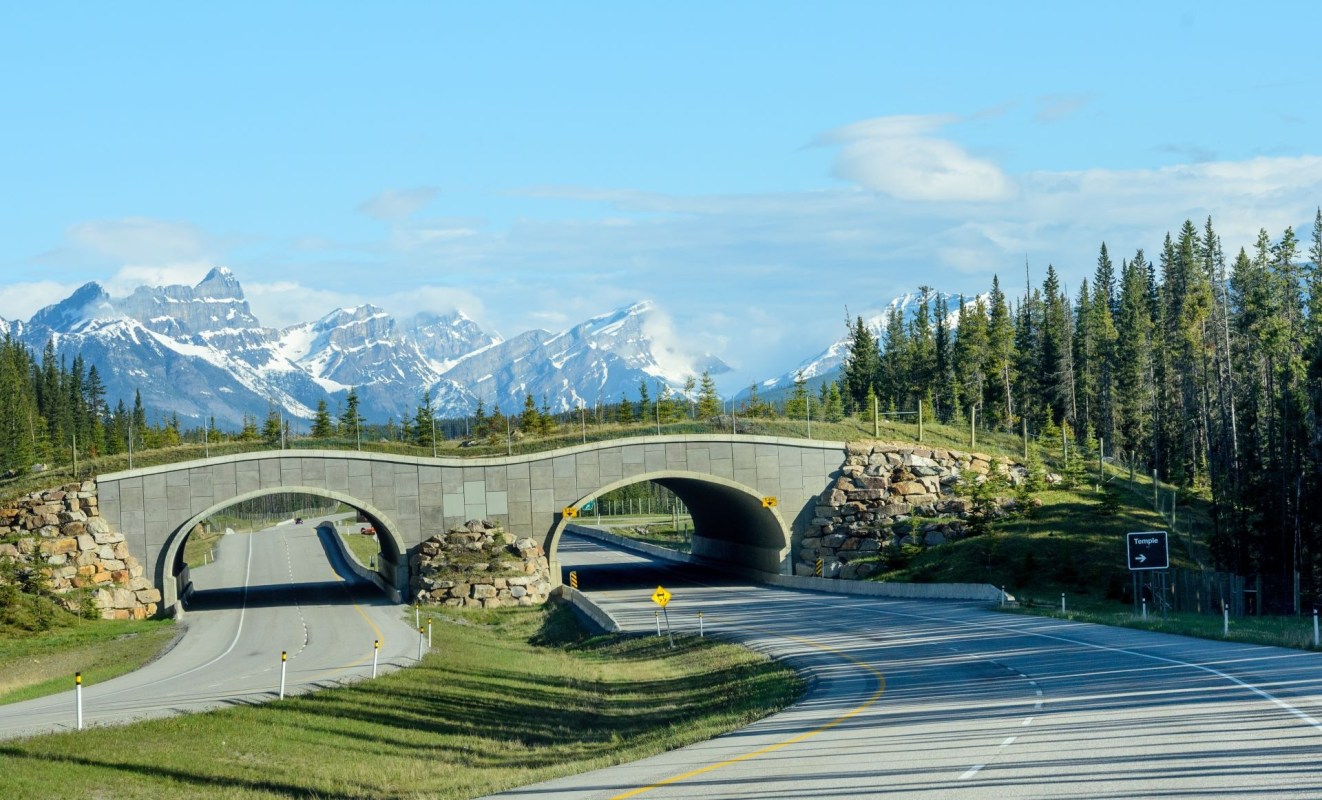By Laurelle Stelle, The Cool Down
The project has been so successful that the same model has been adopted in Costa Rica, Argentina, and parts of Asia.
The Banff Wildlife Crossings Project in Canada’s Rocky Mountains has dramatically reduced the amount of wildlife being hit by cars on the Trans-Canada Highway, APEGA reports.
According to APEGA, the section of the Trans-Canada Highway that runs through Banff National Park was built in the 1950s. At the time, it wasn’t expected to attract as much traffic as it does today. Collisions with wildlife, including deer and elk, took a toll on animal populations in the area.
Meanwhile, the highway effectively divided the animals on each side of the road into two separate populations, APEGA reports. A wide variety of potential mates helps an animal population to maintain its numbers and pass on healthy genes.
In 1996, Parks Canada began building bridges over the roads to connect the two halves of Banff National Park, APEGA says. Each bridge looks like an ordinary highway overpass, but instead of a road running over the top, they hold plants and trees, creating a continuous strip of forest from one side of the highway to the other. Parks Canada also added tunnels that pass under the highway and fences along the edge of the road that guides animals to the crossings.
Each of the first two wildlife overpass cost $1.5 million to build, APEGA reports. However, they proved their value immediately: some species, including elk, started to use the crossings before construction was finished.
According to APEGA, monitoring shows that more than a dozen large species use the crossings, including deer, lynx, coyotes, wolves, wolverines, moose, elk, cougars, and bears. Collisions with animals in the area have decreased by 80% overall, and deer and elk collisions are down by 96%. Not only does this help protect the animals, but it also reduces the risk of accidents, improving safety and reducing vehicle damage along this stretch of highway.
The Banff Wildlife Crossings Project has been so successful in the past three decades that the same model has been adopted in Costa Rica, Argentina, and parts of Asia, APEGA says.

